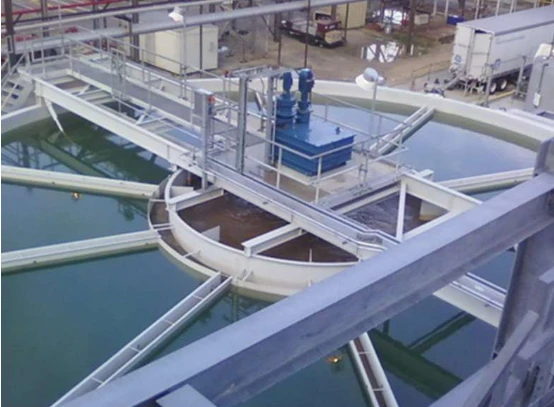
-
 Afrikaans
Afrikaans -
 Albanian
Albanian -
 Amharic
Amharic -
 Arabic
Arabic -
 Armenian
Armenian -
 Azerbaijani
Azerbaijani -
 Basque
Basque -
 Belarusian
Belarusian -
 Bengali
Bengali -
 Bosnian
Bosnian -
 Bulgarian
Bulgarian -
 Catalan
Catalan -
 Cebuano
Cebuano -
 China
China -
 China (Taiwan)
China (Taiwan) -
 Corsican
Corsican -
 Croatian
Croatian -
 Czech
Czech -
 Danish
Danish -
 Dutch
Dutch -
 English
English -
 Esperanto
Esperanto -
 Estonian
Estonian -
 Finnish
Finnish -
 French
French -
 Frisian
Frisian -
 Galician
Galician -
 Georgian
Georgian -
 German
German -
 Greek
Greek -
 Gujarati
Gujarati -
 Haitian Creole
Haitian Creole -
 hausa
hausa -
 hawaiian
hawaiian -
 Hebrew
Hebrew -
 Hindi
Hindi -
 Miao
Miao -
 Hungarian
Hungarian -
 Icelandic
Icelandic -
 igbo
igbo -
 Indonesian
Indonesian -
 irish
irish -
 Italian
Italian -
 Japanese
Japanese -
 Javanese
Javanese -
 Kannada
Kannada -
 kazakh
kazakh -
 Khmer
Khmer -
 Rwandese
Rwandese -
 Korean
Korean -
 Kurdish
Kurdish -
 Kyrgyz
Kyrgyz -
 Lao
Lao -
 Latin
Latin -
 Latvian
Latvian -
 Lithuanian
Lithuanian -
 Luxembourgish
Luxembourgish -
 Macedonian
Macedonian -
 Malgashi
Malgashi -
 Malay
Malay -
 Malayalam
Malayalam -
 Maltese
Maltese -
 Maori
Maori -
 Marathi
Marathi -
 Mongolian
Mongolian -
 Myanmar
Myanmar -
 Nepali
Nepali -
 Norwegian
Norwegian -
 Norwegian
Norwegian -
 Occitan
Occitan -
 Pashto
Pashto -
 Persian
Persian -
 Polish
Polish -
 Portuguese
Portuguese -
 Punjabi
Punjabi -
 Romanian
Romanian -
 Russian
Russian -
 Samoan
Samoan -
 Scottish Gaelic
Scottish Gaelic -
 Serbian
Serbian -
 Sesotho
Sesotho -
 Shona
Shona -
 Sindhi
Sindhi -
 Sinhala
Sinhala -
 Slovak
Slovak -
 Slovenian
Slovenian -
 Somali
Somali -
 Spanish
Spanish -
 Sundanese
Sundanese -
 Swahili
Swahili -
 Swedish
Swedish -
 Tagalog
Tagalog -
 Tajik
Tajik -
 Tamil
Tamil -
 Tatar
Tatar -
 Telugu
Telugu -
 Thai
Thai -
 Turkish
Turkish -
 Turkmen
Turkmen -
 Ukrainian
Ukrainian -
 Urdu
Urdu -
 Uighur
Uighur -
 Uzbek
Uzbek -
 Vietnamese
Vietnamese -
 Welsh
Welsh -
 Bantu
Bantu -
 Yiddish
Yiddish -
 Yoruba
Yoruba -
 Zulu
Zulu
grp water tank
Understanding GRP Water Tanks A Comprehensive Overview
Glass Reinforced Plastic (GRP), also known as Fiberglass Reinforced Plastic (FRP), has emerged as one of the most widely used materials in the construction of water storage tanks. GRP water tanks are favored in various industries, including agriculture, construction, and municipal water supply, due to their unique properties and advantages. This article presents a comprehensive overview of GRP water tanks, highlighting their benefits, applications, and maintenance.
One of the most compelling features of GRP water tanks is their durability. Made from a combination of glass fibers and resin, these tanks are designed to withstand the harshest environmental conditions. They are highly resistant to corrosion, making them ideal for storing water in areas with high salinity or chemical exposure. Unlike traditional materials such as metal or concrete, GRP tanks do not rust, crack, or deteriorate over time, ensuring a long service life.
Understanding GRP Water Tanks A Comprehensive Overview
Another significant advantage of GRP water tanks is their insulation properties. The composite structure of the material provides excellent thermal insulation, which helps maintain the temperature of the stored water. This is particularly beneficial in regions with extreme temperature fluctuations, as it reduces the risk of water freezing in colder months or becoming overheated in summer. By effectively controlling the water temperature, GRP tanks contribute to maintaining the quality of the water, which is essential for both potable and non-potable applications.
grp water tank

On the environmental front, GRP is recognized for being a more sustainable option compared to traditional materials. The production of GRP requires fewer resources and emits lower amounts of greenhouse gases. Additionally, GRP water tanks are fully recyclable, which contributes to reducing waste in landfills. As industries and municipalities increasingly focus on sustainable practices, the adoption of GRP tanks aligns with these objectives.
When it comes to maintenance, GRP water tanks require minimal attention. Regular inspections are typically sufficient to ensure their integrity and performance. Unlike metal tanks, which may require frequent coatings or treatments to prevent rust, GRP tanks maintain their structural integrity without the need for extensive upkeep. Cleaning the tanks is also relatively straightforward, thanks to the smooth interior surfaces that inhibit the growth of algae and bacteria.
GRP water tanks are utilized in a variety of settings, including residential buildings, commercial complexes, and large industrial facilities. They are commonly employed for drinking water storage, irrigation in agriculture, and as part of fire suppression systems. Additionally, they are increasingly being used in renewable energy projects, such as solar water heating systems.
In conclusion, GRP water tanks offer a robust, lightweight, and environmentally friendly solution for water storage needs. Their durability, insulation properties, and low maintenance requirements make them an ideal choice for a wide range of applications. As the demand for efficient and sustainable water storage solutions continues to grow, GRP water tanks stand out as a reliable option that meets the challenges of modern water management. Whether for residential, commercial, or industrial use, GRP water tanks are undeniably a smart investment for the future.









